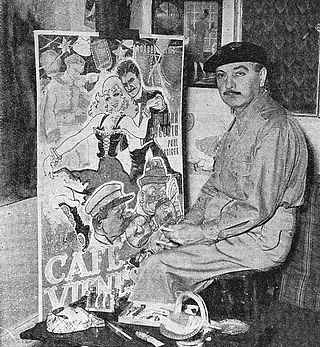
Quirino Cristiani was an Italian-born Argentine animation director and cartoonist, responsible for the world's first two animated feature films as well as the first animated feature film with sound, even though the only copies of these two films were lost in a fire. He is also the first person to create animation solely using cardboard cutouts.

Vitaphone was a sound film system used for feature films and nearly 1,000 short subjects made by Warner Bros. and its sister studio First National from 1926 to 1931. Vitaphone is the last major analog sound-on-disc system and the only one that was widely used and commercially successful. The soundtrack is not printed on the film, but issued separately on phonograph records. The discs, recorded at 33+1⁄3 rpm and typically 16 inches (41 cm) in diameter, are played on a turntable physically coupled to the projector motor while the film is projected. Its frequency response is 4300 Hz. Many early talkies, such as The Jazz Singer (1927), used the Vitaphone system. The name "Vitaphone" derived from the Latin and Greek words, respectively, for "living" and "sound".

Juan Hipólito del Sagrado Corazón de Jesús Yrigoyen was an Argentine politician of the Radical Civic Union and two-time President of Argentina, who served his first term from 1916 to 1922 and his second term from 1928 to 1930. He was the first president elected democratically by means of the secret and mandatory male suffrage established by the Sáenz Peña Law of 1912. His activism was the prime impetus behind the passage of that law in Argentina.

Agustín Pedro Justo Rolón was an Argentine military officer, diplomat and politician, who served as the president of Argentina from 1932 to 1938 during the Infamous Decade. Justo took part in the coup of 1930, becoming president two years later thanks to widespread electoral fraud. His presidency was part of the period known as the Infamous Decade, which lasted from 1930 until 1943. He established the country's central bank and introduced a nationwide income tax.

Máximo Marcelo Torcuato de Alvear y Pacheco, was an Argentine lawyer and politician, who served as president of Argentina between from 1922 to 1928.

Cinema of Argentina refers to the film industry based in Argentina. The Argentine cinema comprises the art of film and creative movies made within the nation of Argentina or by Argentine filmmakers abroad.

Leopoldo Melo was an Argentine lawyer, diplomat and politician. He was a leading figure in the Radical Civic Union, a nominee for president, and later minister of the interior.
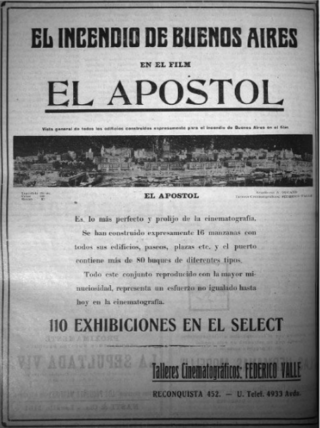
El Apóstol is a 1917 lost Argentine animated film using cutout animation. Italian-Argentine immigrants Quirino Cristiani and Federico Valle directed and produced, respectively. Historians consider it the world's first animated feature film. The film began production after the success of Cristiani and Valle's short film, La intervención a la provincia de Buenos Aires, and was produced either in less than ten months or in twelve months; accounts differ. Its script was written by Alfonso de Laferrére, the background models of Buenos Aires were created by Andrés Ducaud, and the initial character designs were drawn by Diógenes Taborda.
El Mono relojero is a 1938 Argentine animated short film directed by Quirino Cristiani. It is the only film from this director that exists up to this day, since all his other productions were lost in a series of fires at the facilities where the negatives and copies were stored; Sin dejar rastros was confiscated on the day of its premiere, and is believed to have been immediately destroyed. El mono relojero was saved from the fires because, by chance, the author of its script Constancio C. Vigil had a copy of his own.
Sin dejar rastros is a 1918 lost Argentine animated feature film. It was written and directed by Quirino Cristiani. The film used cutout animation.
The period spanning from 1916 to 1930 in Argentina is known as the Radical Phase, as it began with the election of the Radical Civic Union candidate Hipólito Yrigoyen, ending the conservative Generation of '80's domination on politics. Yrigoyen's second term, which started in 1928, was interrupted by Argentina's first military coup, which established José Félix Uriburu in power and initiated the Infamous Decade.

General elections were held in Argentina on 2 April 1916. Voters elected the President, legislators, and local officials. The first secret-ballot presidential elections in the nation's history, they were mandatory and had a turnout of 62.8%. The turnout for the Chamber of Deputies election was 65.9%.

The Argentine presidential election of 1937 was held on 5 September 1937.
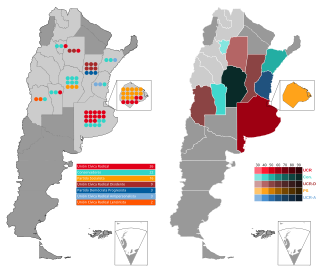
The Argentine legislative elections of 1924 were held on 2 March. Voters chose their legislators and numerous governors, and with a turnout of 44.2%.
Peludo or El Peludo may refer to:
Autumn Roses is a 1931 Argentine short musical film directed by Eduardo Morera.
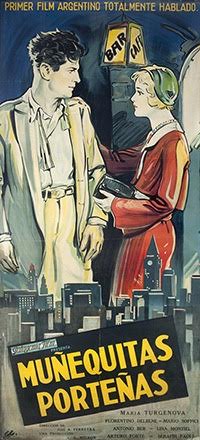
Muñequitas porteñas is a 1931 Argentine film directed by José A. Ferreyra. It was the first Argentine feature film with spoken dialogue, although the Vitaphone sound disks are now considered lost.

Vitaphone Varieties is a series title used for all of Warner Bros.', earliest short film "talkies" of the 1920s, initially made using the Vitaphone sound on disc process before a switch to the sound-on-film format early in the 1930s. These were the first major film studio-backed sound films, initially showcased with the 1926 synchronized scored features Don Juan and The Better 'Ole. Although independent producers like Lee de Forest's Phonofilm were successfully making sound film shorts as early as 1922, they were very limited in their distribution and their audio was generally not as loud and clear in theaters as Vitaphone's. The success of the early Vitaphone shorts, initially filmed only in New York, helped launch the sound revolution in Hollywood.
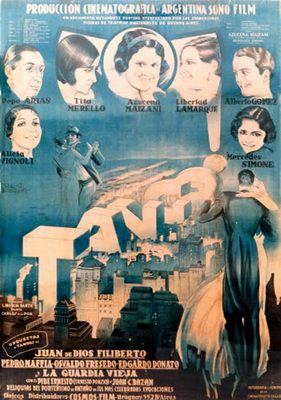
¡Tango! is a 1933 Argentine musical romance film, the first film to be made in Argentina using optical sound technology Many existing stars of the Argentine stage and radio appeared in the film, but its success was limited due to poor sound quality and weak acting. ¡Tango! established a formula that would be used by many subsequent tango films.
Events from the year 1930 in Argentina














